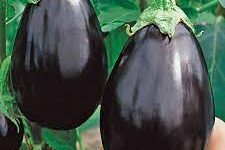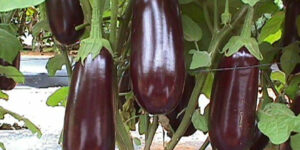Eggplant
Eggplant, also known as aubergine in some parts of the world, is a versatile and popular vegetable used in various cuisines globally. Here’s a guide on how to prepare and cook eggplant:
Choosing Eggplant: Look for eggplants that are firm, shiny, and have a deep color. Avoid ones with soft spots or wrinkled skin.
Washing and Preparing: Rinse the eggplant under cold water and pat it dry. Trim off the green cap if it’s still attached. Depending on the recipe, you can peel the skin or leave it on for cooking. Slice or cut the eggplant according to your desired shape – rounds, cubes, or lengthwise slices.
Removing Bitterness (optional): Some people prefer to remove bitterness from eggplant, especially in larger or older ones. To do this, sprinkle salt on the cut surfaces and let it sit for about 20-30 minutes. Rinse the eggplant thoroughly and pat it dry before cooking.
Cooking Methods: Eggplant can be cooked in several ways:
Roasting/Baking: Toss the eggplant pieces with oil, salt, and any desired spices. Roast in the oven until they’re tender and lightly browned.
Grilling: Brush eggplant slices with oil and grill them until they get grill marks and are cooked through.
Sautéing/Stir-Frying: Heat oil in a pan and cook the eggplant pieces until they’re tender and golden brown. You can add other vegetables, herbs, and spices to enhance the flavor.
Steaming or Boiling: Cut eggplant into chunks and cook them in boiling water until they’re tender. This method is suitable for dishes like curries or stews.
Seasoning and Flavoring: Eggplant pairs well with various seasonings such as garlic, onions, tomatoes, herbs like basil, oregano, and spices like cumin or paprika. It’s also delicious when combined with soy sauce, balsamic vinegar, or sesame oil for an Asian-inspired flavor.
Storing Eggplant: Store uncut eggplants in a cool, dry place or in the refrigerator for up to a week. Once cut, wrap the remaining portion tightly in plastic wrap and use it within a few days.
Eggplant is commonly used in dishes like ratatouille, moussaka, baba ganoush, curries, stir-fries, and as a meat substitute in vegetarian dishes due to its meaty texture. Experimenting with different cooking methods and flavor combinations can help you discover various ways to enjoy this nutritious vegetable.
Showing all 2 results


